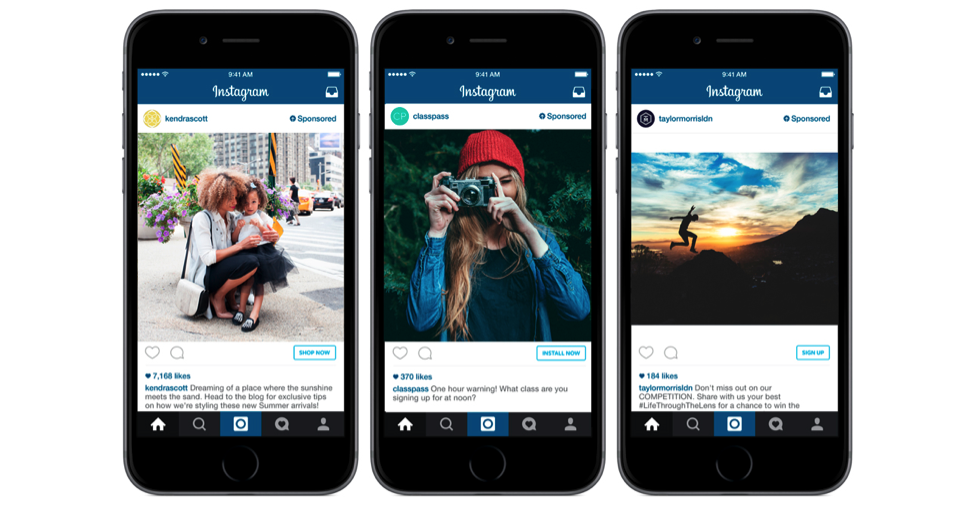By: Claire Wilcox
These days mobile devices seem to be an extension of the human body. A millennial without a phone is like a baby without a pacifier. No wonder marketers are pushing themselves to take on the challenge and opportunity of reaching audiences on the go. It is determined that by 2021, 81% of all social media advertising revenue will be generated by mobile ads (source). Here are four ways advertising is shifted from desktop to mobile.

- Content
Advertisements do not show up on mobile devices the way they appear on desktops. Because of AdBlock technology that enables customers to avoid advertisements, companies are taking advantage of social media apps to approach customers. For example, popular social media platforms like Instagram and Snapchat incorporate advertising into their image-sharing swipe and scroll platform. This means that customers will scroll down their feed or swipe through their stories and stumble upon an ad. Ad content that is hyperlocal (using location-based services) and visually appealing is often accepted, if not welcomed by its audience. - Influencer Marketing
Even though mobile conversion rates are currently lower than desktop conversion rates (for reasons having to do with security skepticism and the idea that palm-sized screens make it harder to purchase items), social media apps are having more impact on consumer purchase decisions. According to Liz Dunn, founder and CEO of Talmage Advisors, “Consumers trust the opinions of those in their social media group, including friends, bloggers and celebrities, more than messages they are getting directly from brands.” The best kinds of influencers for brands are not only the ones with a large following, but also ones that appeal to the brand’s target audience. - Programmatic Direct
Traditional media reservations have not offered advertisers the control of placing a display ad near the most brand-compatible content. With programmatic direct, ad buyers are able to reach the right audience in the right place at the right time. Instead of manually inserting orders using traditional direct deals, buyers can automate the process. The way it works? An algorithm is used to assess real-time data for more precise targeting. In fact, U.S. programmatic display ad spending is estimated to reach nearly $33 billion in 2017, of which 74% is mobile (source). - Purchase Behavior and Brand Experience
With Internet activity becoming increasingly mobilized, consumers are able to price-check items and look up product information and reviews on the spot. For marketers, this consumer power brings the challenge of merging the digital space with brick-and-mortar stores. Retailers and brands that commit to offering a seamless media mix create dynamic purchase experience.
Sources:
https://www.emarketer.com/Article/eMarketer-Releases-New-Programmatic-Advertising-Estimates/1015682
http://adage.com/article/digitalnext/mobile-marketing-trends-2017/307343/
https://adexchanger.com/the-sell-sider/programmatic-guaranteed-promises-perils/
http://www.retaildive.com/news/how-shoppers-use-their-smartphones-in-stores/444147/

